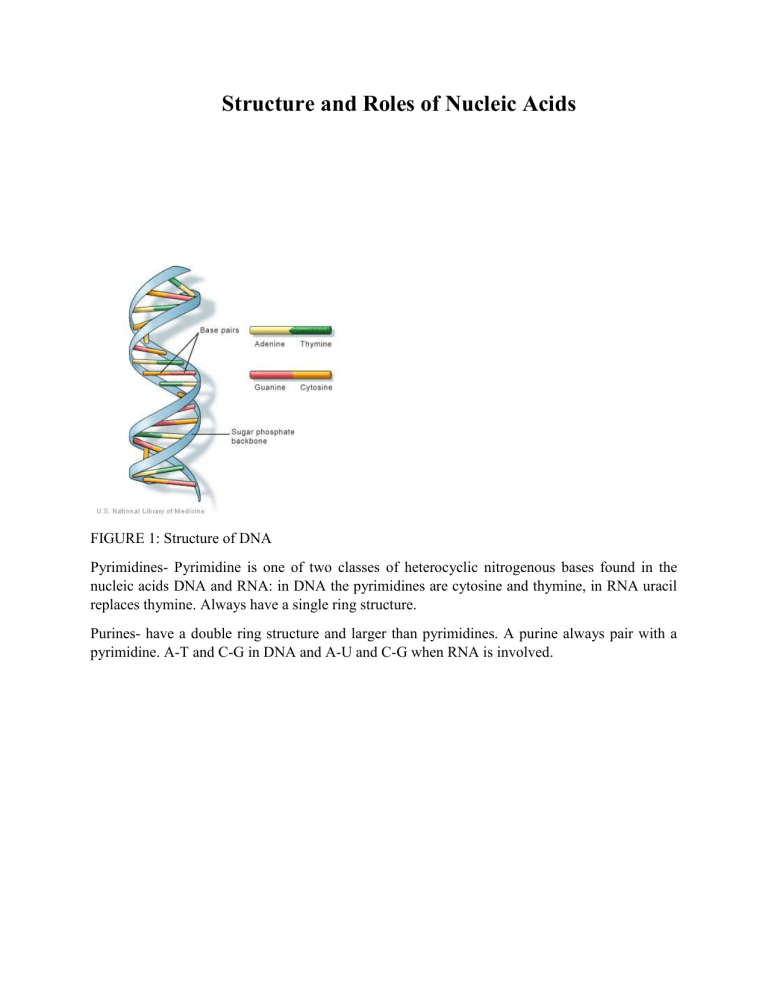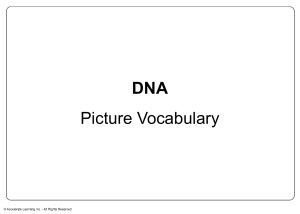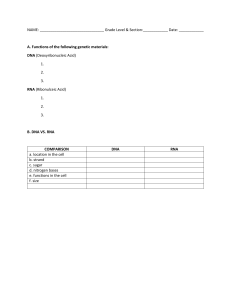
Structure and Roles of Nucleic Acids FIGURE 1: Structure of DNA Pyrimidines- Pyrimidine is one of two classes of heterocyclic nitrogenous bases found in the nucleic acids DNA and RNA: in DNA the pyrimidines are cytosine and thymine, in RNA uracil replaces thymine. Always have a single ring structure. Purines- have a double ring structure and larger than pyrimidines. A purine always pair with a pyrimidine. A-T and C-G in DNA and A-U and C-G when RNA is involved. Structure of purines and pyrimidines Nature of hydrogen bonds- The hydrogen bonding in the DNA bases of one purine (guanine and adenine) and one pyrimidine (cytosine and thymine) creates a similar shape. Cytosine and Guanine are held together by three hydrogen bonds. The pairing of adenine and thymine share two hydrogen bonds, thus the bond is slightly weaker and slightly longer. FUGURE 1V: Structure of DNA and RNA. Table showing comparison between DNA and RNA. DNA Double stranded Deoxyribose sugar Uses thymine Can last for a long time Can self-replicate Stores genetic information Is read 3’>5’ RNA Single stranded Ribose sugar Uses uracil Does not usually last for a long time Can have multiple structures (mRNA, rRNA, tRNA) Stores information about protein structure Is formed in 5’>3’ References: 1) Jones ME (1980). “Pyrimidine nucleotide biosynthesis in animals: genes, enzymes, and regulation of UMP biosynthesis”. Annual Review of Biochemistry. 49 (1): 253–79. 2) McMurry JE, Begley TP (2005). The organic chemistry of biological pathways. Roberts & Company.



